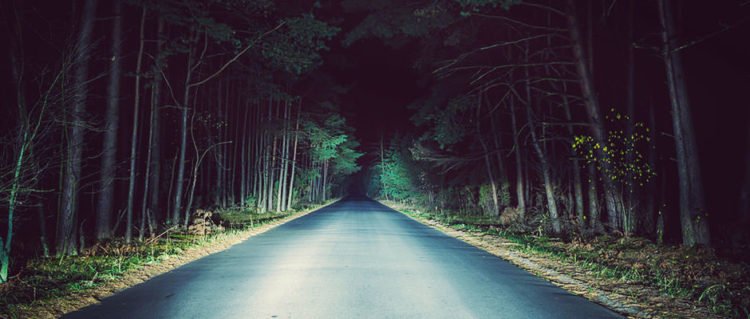You’ve just left your friend’s house. It’s around midnight and you have to be at work in the morning. It is only a few minutes drive back to your own home. But a lot can happen in those few minutes, and if you’re not prepared, it could be fatally dangerous.
Traffic fatality rates are three times greater at night than during the day. In fact, almost half of all car accidents that happen in a year occur at night. This may surprise you, especially since there is normally 60 percent less traffic at night. But there are many factors that go into this occurrence.
The first factor is vision. Your vision is impaired in the dark, and 90 percent of your reaction time depends on sight, and it takes longer to react to any hazards than it normally would during the day. Your depth perception, color recognition and peripheral vision are also impaired at night. Twilight is the worst time of night to be driving, because the constantly changing light has an effect on your eyes.
Deer, and other animals, are also dangerous hazards at night. Deer are most active between 6 and 9 p.m. and are unpredictable when caught in headlights. At night, it is harder to see if a deer is along the side of the road and about to cross the street, so always keep on the lookout.
Impaired driving occurs at all times, but nighttime is likely to see more accidents. There are two common forms of impaired driving:
- Drunk driving — 18 percent of crashes during the day are alcohol related, but 54 percent of accidents are at night.
- Drowsy driving, which dulls concentration.
These two can actually go hand-in-hand, since alcohol is a depressant and can increase fatigue in drunk drivers.
Nighttime driving is dangerous, but as with other dangerous activities, there are precautions you can take to keep yourself and others safe.
- Most importantly: wear your seatbelt. Of the people killed in auto accidents at night, two thirds are NOT wearing a seatbelt.
- Keep your headlights, taillights, signal lights and windows clean to make it easier to see and for others to see you.
- Go slow and keep your distance from other cars in case of hazards.
- If you are alone on a road, it is recommended you use your high beams to increase visibility, but if there is a car coming, turn off your high beams in order to keep from blinding them. If the oncoming car does not turn off their high beams, look toward the white line on the right side of the road to avoid being blinded.
- Keep your dashboard lights at a low setting, since the contrast between bright and dark will impede your vision.
If you or a loved one has suffered a personal injury from a car accident at night, de Lachica Law Firm, PLLC is committed to helping you with your personal injury case.
Contact Houston car accident injury lawyer de Lachica Law Firm, PLLC in Houston today.

